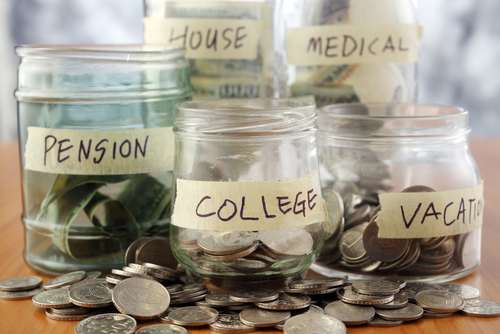7 Steps to Gain Control over Your Household Budget
Careful budgeting is the key to having control over your finances. By knowing what you earn and how much you spend you will never again ask yourself “how did I run out of money again?”
Step 1.Write down all your monthly sources of income in a table like the one below.
| Income source | Amount |
| Monthly salary from full time job (include the salaries of all the members who contribute to the family budget) | $2000 |
| Collected rent from tenants | $1000 |
| Freelance work | $1000 |
| Business profits | $1500 |
Step 2. Add up all your sources of income in a column named “Total” and try to highlight it either by writing in another color or by circling the number.
Step 3. Identify all your areas of expenses and estimate the money needed to cover each category. Remember that you have to take into account every member of the family. Here are a few examples:
A. Fixed expenses – you have to pay them every month and the value doesn’t vary much.
- Rent: $1000;
- Loan payments: $300;
- Car payments: $350;
- Insurance payments: $400;
- Mortgage payments: $500;
- Transportation costs: $100 on subway fees and $80 on gas;
- Groceries: $300;
- Utilities:
- Electricity $150;
- Water $80;
- Gas heating $80;
- Internet $70;
- TV $90;
- Home Phone $50;
- Mobile Phone $80;
- Other subscriptions: gym subscription $60.
- Entertainment costs – going out, hobbies, classes, weekend trips etc.;
- Medical expenses;
- Car repair costs;
- Clothes and school accessories.
Step 5. The moment of truth. Put away the money for the fixed expenses and see how much of your income remains for variable expenses. It’s best to not touch that money, forget it even exists. They don’t belong to you anymore, they belong to the bank, landlord, utilities companies and whoever else you owe money to.
Step 6. Set a date each month when you pay all your bills. This helps you avoid any money related anxiety and allows you to remain in control. You might consider setting automated payment systems for your installments and utility bills.
Step 7. If you think you are spending too much on a category, start looking for cheaper alternatives. For example:
- Switch to basic TV, internet and phone subscriptions. You could try getting them all from the same provider because it’s usually cheaper.
- Cancel gym subscription – there are plenty of other ways to stay fit: jogging, walking, body weight exercises, rope jumping etc.
- Cut back on junk food and sugary drinks. You will be surprised to see how much money you spend on chips, sweets and sodas.
- Forget the subway and the car – ride a bicycle at least a few days a week.
- Pay more attention to how you use water and electricity. The rule of thumb is to turn off what you don’t use at a given moment.
- Go out to budget bars and clubs or party at home.
